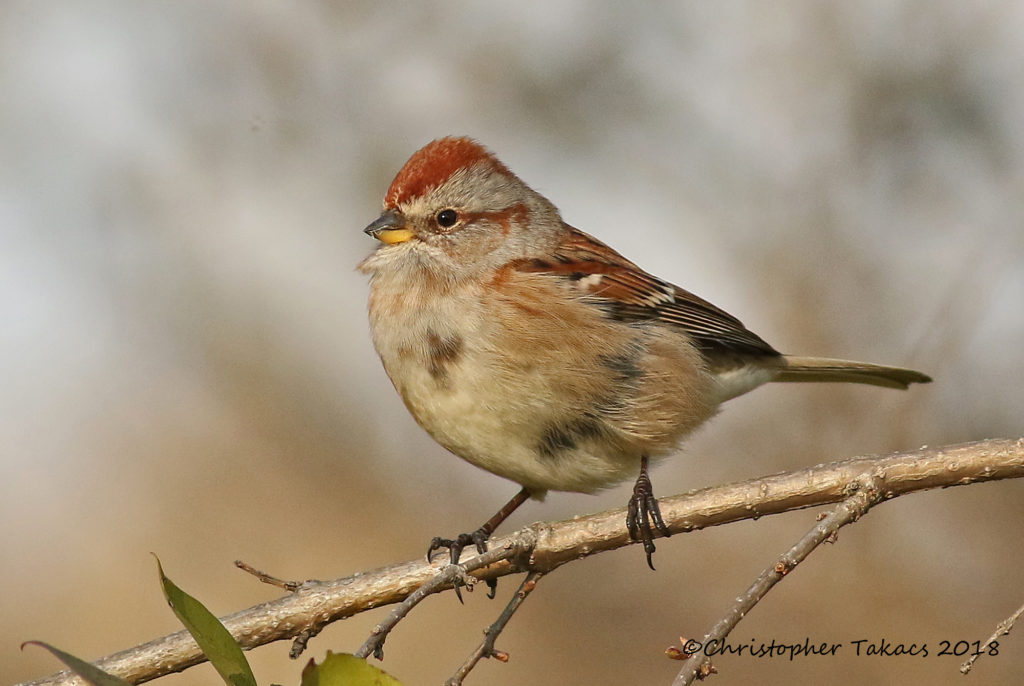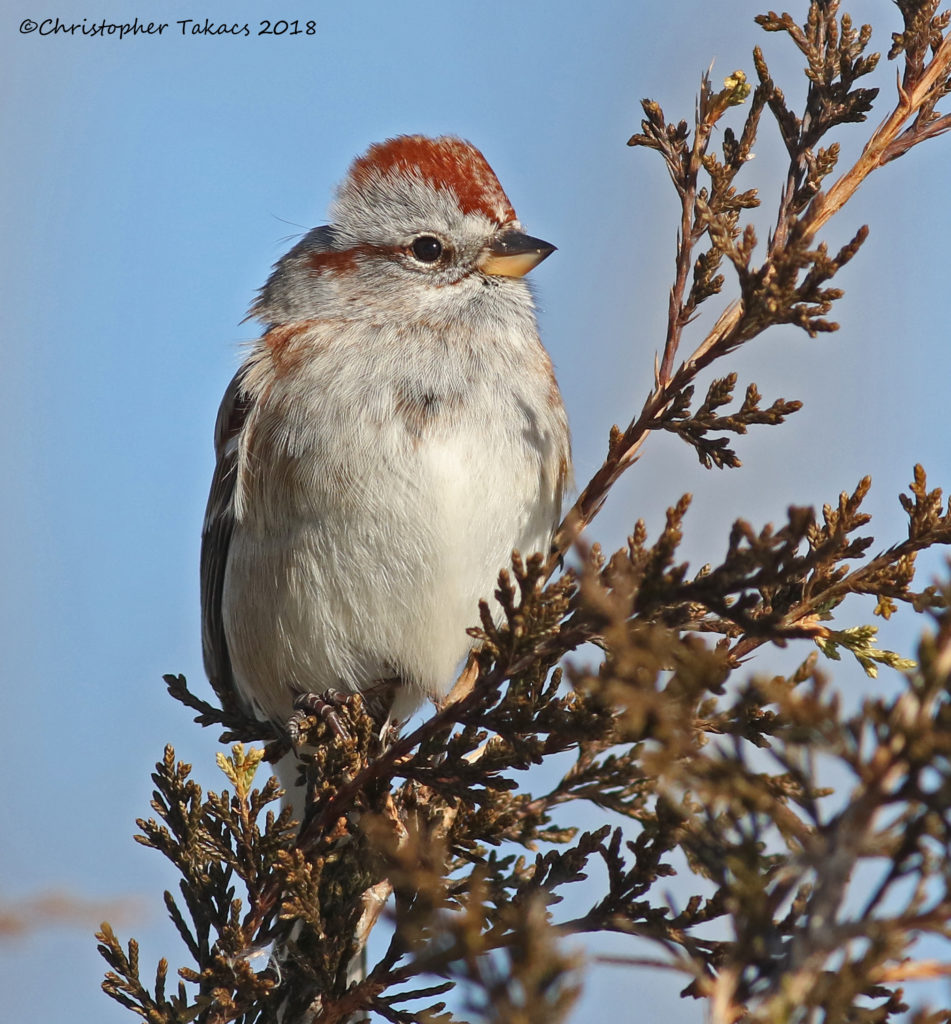Note: The NJSEA offices will be closing at 11 a.m. on both Tuesday, Dec. 24, and Tuesday, Dec. 31. The offices will be closed on Christmas and New Year’s Day.
Daily Archives: December 24, 2019
Don Torino’s Life in the Meadowlands: The American Tree Sparrow – Long Distance Visitor to the Meadowlands

As I wandered a brilliant, freezing, cold wintery open field through the Meadowlands many years ago I was startled by a tiny little bird that was barely clinging to the tip of a windswept phragmite.
I was immediately captivated by this tiny but very energetic little bird’s rusty colored cap, gray face, two-toned bill and very small and dark but very noticeable splotch on its breast. After realizing my presence it very quickly raised the rufous hackles on its head and was off like a flash into the russet grasses of the winter field.

As soon as I got home I quickly perused my field guide and discovered that I had been privileged to been observing an American Tree Sparrow, a bird that truly racks up its frequent flyer miles migrating all the way from the tundra of northern Canada to spend the long Meadowlands winters here along with us. In the same way your first sighting of a Bald Eagle is always embossed in your fondest memories, the same is true for me with the American Tree Sparrow. I can still see it swaying back and forth on the phrag against the cloudless blue sky as the smoky vapor from my mouth filled the frigid air around me .
According to Cornell’s “All About Birds” the American Tree Sparrow’s name was mistakenly given to them by the European settlers because it reminded them of their Eurasian Tree Sparrows back home. Our American Tree Sparrows however are in reality ground birds. They forage on the ground, nest on the ground and breed primarily in scrubby areas at or above the tree line far up in the Arctic Tundra area of Canada .
Chris Takacs, Field Trip Director for Bergen County Audubon, told me, “ I usually find them feeding in the phragmites or the mugwort of the landfills. They are the last regular migrant sparrow to arrive in our Meadowlands. I find them very interesting because of the amazing distance they travel to winter in our Meadowlands, all the way from their home in the far north tundra breeding grounds.”

The Tree Sparrow not only winters in the fields, roadsides and meadows in places like DeKorte Park in Lyndhurst and Laurel Hill Park and Mill Creek Marsh in Secaucus, but they readily visit our backyard bird feeders. In fact, the American Tree Sparrows needs to consume about 30 percent of their body weight in food and a similar percentage in water each day or they may not survive the long winter night.
Their diet, at least in winter, is almost entirely seeds and possibly a few insects and berries if they are available. Your backyard birdfeeder can help play an important part in their survival by adding White Proso millet to your seed mix or just spreading handfuls of this tiny seed under your shrubs and around your yard.
Sadly the future of this incredible little bird is not certain. If Climate change continues on its current course the American Tree Sparrow will lose 86 percent of its breeding range, putting their vulnerability on a high risk status
Our Native Sparrows like the American Tree are a complex and incredible group of birds that depend on the Meadowlands for their ultimate survival. The more we learn about the fantastic and vast array of birdlife that thrives around us should make us all realize how important it is that we continue to work together to preserve and protect the natural places around us like our Meadowlands. For without them birds like the American Tree Sparrow could not continue to endure.
For more info on the American Tree Sparrow go to https://www.audubon.org/field-guide/bird/american-tree-sparrow
